Singapore’s Response Strategy
Singapore has established a high-level national task force chaired by Deputy Prime Minister Gan Kim Yong to navigate this crisis. This approach demonstrates:
- Institutional seriousness – By forming a task force comparable to their COVID-19 response mechanism, Singapore signals they view these tariffs as a potentially severe economic threat
- Collaborative governance – The task force integrates government economic agencies with business federations and labor unions, showing a whole-of-society approach
- Rapid mobilization – The swift formation of this group following Trump’s April 2nd “Liberation Day” tariff announcements shows Singapore’s characteristic preparedness.
Prime Minister Lawrence Wong’s stark declaration that “the era of rules-based globalisation and free trade is over” represents a significant rhetorical shift for a nation that has long championed and benefited from open global trade.
Economic Impact Analysis
The article identifies several key economic impacts:
- Labor market disruption:
- Potential boost to domestic industries and reshoring activities
- Vulnerability in export-dependent sectors
- Risk to contract workers and those in trade-related industries
- Possible wage restraint and reduced bonuses
- Supply chain challenges:
- Potential restructuring of pharmaceutical and semiconductor supply chains
- Companies front-loading components and stockpiling inventory as precautionary measures
- Operational challenges as businesses attempt to diversify supply sources
- Price effects:
- Possible disinflationary pressure if Chinese exports are redirected to non-US markets
- Construction sector facing cost volatility in materials like steel and timber
- Risk of higher consumer prices as supply chain inefficiencies build
- Growth prospects:
- Likely downgrading of GDP forecast from 1-3% to possibly 0-2%
- Risk of postponed business investment due to uncertainty
- Potential contraction in consumer confidence and spending
Diplomatic Implications
This situation represents a significant diplomatic challenge for Singapore:
- Navigating great power tensions:
- Singapore must maintain relationships with both the US and China while these powers engage in escalating trade conflicts
- The 10% tariff on Singapore exports (described as “relatively mild” compared to regional peers) suggests Singapore still maintains a favorable status with the US despite its close economic ties with China
- Regional repositioning:
- The article notes Singapore will likely work to “strengthen relationships with friendly partners” within ASEAN
- Increased focus on alternative trade frameworks that exclude the US: CPTPP, RCEP, BRICS+
- Opportunity to position Singapore as a stabilizing regional force amid volatility
- Diplomatic identity shift:
- Singapore faces an existential challenge to its longstanding identity as a champion of rules-based global trade
- Singapore must develop a new diplomatic narrative that acknowledges protectionism while preserving Singapore’s core economic interests
- Will need to balance being a critic of protectionism while avoiding antagonizing major trading partners
- Policy flexibility:
- Singapore retains significant policy flexibility with possible monetary easing through S$NEER adjustments
- Fiscal room remains to support businesses and households if conditions deteriorate
- The government appears ready to implement targeted interventions rather than wholesale economic restructuring
Long-term Strategic Implications
The situation forces Singapore to accelerate several strategic adaptations:
- Economic diversification beyond traditional export markets and sectors
- Workforce development focused on resilience and adaptability
- Social safety net enhancement to protect vulnerable citizens during economic volatility
- Diplomatic reorientation toward a more complex, less rules-based international order
PM Wong’s framing of this as “a profound turning point” signals that Singapore views this not as a temporary disruption but as a fundamental shift in the global economic architecture that will require sustained strategic adaptation.
Analysis of IT Security Workforce Impact in Singapore’s Tariff Response Context
While the article doesn’t directly address IT security workforce implications, I can analyze likely impacts based on the broader economic and security context Singapore faces amid these trade tensions.
Immediate IT Security Workforce Implications
- Increased demand for cybersecurity expertise:
- As businesses restructure supply chains and digital infrastructure to adapt to new trade realities, security vulnerabilities may emerge
- Organizations will need security professionals to assess risks in rapidly evolving supplier networks
- Financial sector particularly likely to increase security staffing as markets experience volatility
- Workforce pressure points:
- Singapore already faces IT security talent shortages (like most global markets)
- Economic uncertainty might paradoxically both increase demand for security expertise while constraining hiring budgets
- Contract security workers may face the dual pressure of increased workloads and employment instability
Strategic Security Workforce Considerations
- Digital sovereignty concerns:
- The breakdown of “rules-based globalisation” likely extends to digital infrastructure
- Singapore may accelerate efforts to develop sovereign cybersecurity capabilities less dependent on US or Chinese technologies
- This could drive investment in local security talent development and retention
- Supply chain security expertise:
- Growing need for specialists who understand both cybersecurity and supply chain logistics
- Companies restructuring global operations will need security experts who can assess third-party risks across diverse regulatory environments
- May create premium demand for security professionals with international experience
- Critical infrastructure protection:
- Singapore’s position as a trade and financial hub makes its digital infrastructure an even more critical national asset during trade disputes
- Could accelerate government investment in security workforce development for critical sectors
Workforce Development Responses
- Targeted training initiatives:
- The national task force may incorporate IT security workforce development into its mandate
- Existing initiatives like Singapore’s Skills Framework for ICT may be expanded with security-specific components
- Public-private partnerships for security training could intensify
- International talent attraction:
- Economic disruption in other markets might create opportunities for Singapore to attract displaced security talent
- Immigration policies might be adjusted to facilitate security talent acquisition
- Security automation investment:
- Labor constraints and economic pressure could accelerate the adoption of security automation technologies
- Creates demand for higher-skilled security professionals who can manage automated systems
Broader Implications
- Security as an economic differentiator:
- Strong cybersecurity capabilities could become a competitive advantage for Singapore amid global supply chain restructuring
- Companies may relocate sensitive operations to Singapore precisely because of its security reputation and workforce
- Geopolitical security considerations:
- IT security professionals increasingly need to understand geopolitical tensions and their technology implications
- Security workforce development may incorporate more training on navigating divided technology ecosystems
- Resilience focus:
- Aligns with PM Wong’s emphasis on adaptability and resilience as key values
- IT security workforce likely to place greater emphasis on business continuity and resilience planning rather than just threat prevention
The national task force will likely need to address IT security workforce development as part of its broader mandate to strengthen Singapore’s economic resilience in this new trade environment.
Analysis of Relevant WSQ Programs for IT Security Workforce Development
In Singapore’s current context of responding to trade tensions and economic uncertainty, several Workforce Skills Qualifications (WSQ) programs are directly relevant to developing IT security talent. These programs would be particularly valuable as Singapore looks to strengthen its cybersecurity capabilities during this period of global economic realignment.
Key Relevant WSQ Programs
- Skills Framework for Infocomm Technology (SF for ICT)
- Includes dedicated cybersecurity career tracks with structured progression paths
- Offers certification in cybersecurity operations, governance, and architecture
- Particularly relevant for retraining professionals from other sectors impacted by trade disruptions
- Advanced Certificate in Infocomm Technology (Security)
- Provides foundation-level security training for IT professionals
- Covers network security, cryptography, and security operations
- Could help rapidly expand the security talent pipeline if prioritized by the task force
- Professional Diploma in Cybersecurity
- More comprehensive program covering both technical skills and security governance
- Includes modules on risk management particularly relevant to supply chain security
- Could be targeted at mid-career professionals needing to pivot as job markets shift
- Specialist Diploma in Cybersecurity Management
- Focuses on strategic security planning and management
- Particularly relevant for developing leaders who can navigate security challenges in a volatile trade environment
- Includes modules on regulatory compliance across different jurisdictions
- Critical Infocomm Technology Resource Programme Plus (CITREP+)
- Provides funding support for professionals to obtain industry certifications
- Could be expanded or prioritized as part of the task force’s workforce development strategy
- Particularly valuable for quickly addressing specific security skill gaps
Strategic Integration Opportunities
These WSQ programs could be strategically augmented to address specific challenges related to the current trade situation:
- Supply Chain Security Modules
- Adding specialized content on securing reconfigured supply chains
- Developing competencies in third-party risk assessment relevant to new trading partners
- Digital Sovereignty Components
- Incorporating training on building resilient systems less dependent on potentially restricted technologies
- Developing skills for operating in increasingly fragmented technology ecosystems
- Critical Infrastructure Protection
- Enhancing training specific to Singapore’s critical financial and logistics infrastructure
- Focusing on resilience in the face of both economic and security pressures
Implementation Considerations
For maximum effectiveness, the national task force could consider:
- Accelerated Funding Mechanisms
- Increasing subsidies for these programs, particularly for workers from vulnerable sectors
- Creating fast-track completion options for critical skill areas
- Industry-Specific Customization
- Tailoring program components to address the security needs of particularly vulnerable industries
- Developing specialized tracks for financial services, logistics, and manufacturing security
- Integration with Economic Support Measures
- Linking participation in these programs with broader business support initiatives
- Using workforce development incentives to encourage security investment during economic uncertainty
These WSQ programs represent established frameworks that could be rapidly scaled and adapted to address the security workforce needs emerging from Singapore’s current economic challenges.
Key Precautionary Measures for Cyber Safety: A Detailed Guide
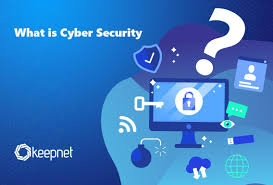
In today’s interconnected world, where technology permeates every aspect of our lives, safeguarding our digital presence is more crucial than ever. Cyber threats are constantly evolving, and proactive measures are essential to protect our personal information, financial assets, and online identities. This guide outlines key precautionary measures that individuals can readily implement to enhance their cyber safety.
Antivirus Protection: Your First Line of Defense

Antivirus software acts as a crucial barrier against malicious software, or malware, that can compromise your devices and data.
Install good antivirus software on all devices: Choose a reputable antivirus program and install it on all your computers, smartphones, and tablets. Ensure it’s always running in the background, providing real-time protection.
Scan USB drives before opening them: USB drives can be a significant source of malware. Always scan them with your antivirus software before opening any files they contain. This prevents the automatic execution of malicious code.
Utilize both paid and free versions of reliable antivirus programs: Consider a paid version for advanced features such as firewall protection, web filtering, and ransomware protection. However, even free versions from reputable vendors offer a significant level of protection against common threats. Research and compare different options to find the best fit for your needs and budget.
Password Management: Building a Strong Foundation

Strong and unique passwords are the cornerstone of online security. Create unique, complex passwords for different accounts: Avoid reusing passwords across multiple websites or applications. If one account is compromised, all accounts with the same password become vulnerable. Avoid using the same simple password across platforms. Hackers can easily guess Simple passwords like “password123” or your pet’s name. Choose passwords that are difficult to crack.
Incorporate special characters and acronyms to make passwords unpredictable: Mix uppercase and lowercase letters, numbers, and special characters (e.g., !, @, #, $, %) to increase password complexity. Use a passphrase or acronym that is meaningful to you but hard for others to guess. Consider using a password manager to securely store and generate strong, unique passwords.
App and Software Updates: Closing Security Gaps

Software updates are not just about adding new features; they are vital for patching security vulnerabilities. Regularly update payment and other apps: Apps often contain security flaws that hackers can exploit. Updating your apps ensures that these vulnerabilities are addressed, protecting your data.
Don’t ignore software update notifications: Software developers constantly release updates to fix security vulnerabilities. Pay attention to update notifications and install them promptly. Enable automatic updates whenever possible. Updates help fix security vulnerabilities: Updates often include patches for newly discovered security vulnerabilities, protecting your system from attacks.
Link and Email Safety: Recognizing and Avoiding Phishing

Phishing attacks are a standard method used by cybercriminals to steal your personal information. Never open links or download files from unknown sources: Be extremely cautious when clicking on links or downloading files from emails or websites you don’t recognize. These could contain malware or direct you to phishing sites. Hover over links before clicking to see the actual URL.
Be wary of spam emails claiming lottery wins or gifts: Such emails are often scams designed to trick you into providing personal information or downloading malicious attachments. Delete them immediately.
Avoid clicking on suspicious email attachments: Email attachments can contain malware. Exercise extreme caution before opening any attachments, especially from unknown senders or if the email content seems suspicious.
Software Download Practices: Ensuring Authenticity
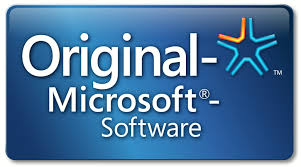
Downloading software from unofficial sources can expose your system to malware.
Download apps and software only from official sources: Official sources, like app stores and developer websites, typically have security measures in place to protect against malware.
Use Google Play Store, Apple Store, or official websites: These platforms have a review process for apps, reducing the risk of downloading malicious software.
Avoid downloading from unverified third-party sites. These sites may distribute infected software or software bundled with unwanted programs.
Third-Party Computer Usage: Protecting Your Privacy

Using public or shared computers requires extra caution to prevent unauthorized access to your accounts.
4. Use the browser’s incognito mode on shared computers: Incognito mode prevents the browser from saving your browsing history, cookies, and login credentials.
Avoid storing login credentials: Never save your usernames and passwords on a shared computer.

Use on-screen/virtual keyboards to prevent keylogger tracking: Keyloggers are malicious programs that record your keystrokes. Using an on-screen keyboard can help prevent them from capturing your passwords.
Comprehensive Cybersecurity Methods and Strategies
Introduction to Cybersecurity
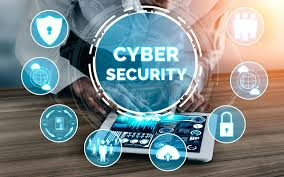
Cybersecurity is a multi-layered approach to protecting digital systems, networks, and data from malicious attacks, unauthorized access, and potential breaches. It encompasses a wide range of techniques, technologies, and practices designed to safeguard digital assets and maintain the integrity, confidentiality, and availability of information.
Key Cybersecurity Methodologies
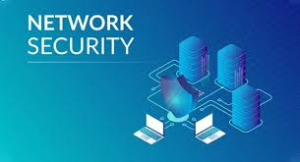
1. Defense-in-Depth Strategy
A comprehensive security approach that uses multiple layers of security controls:
- Physical security
- Network security
- Application security
- Data security
- User awareness
Principles:
- No single point of failure
- Multiple defensive mechanisms
- Redundant security controls
- Continuous monitoring and adaptation
2. Authentication Methods
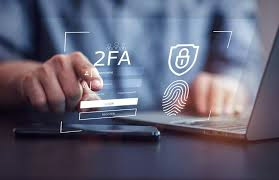
a) Multi-Factor Authentication (MFA)
- Combines multiple verification methods:
- Something you know (password)
- Something you have (security token)
- Something you are (biometric data)
b) Advanced Authentication Techniques
- Biometric Authentication
- Fingerprint scanning
- Facial recognition
- Retina/iris scanning
- Token-based Authentication
- Hardware tokens
- Software tokens
- Time-based One-Time Passwords (TOTP)

3. Encryption Techniques
Symmetric Encryption
- Single key for encryption and decryption
- Faster processing
- Best for large data volumes
- Examples: AES, DES
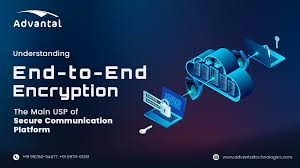
Asymmetric Encryption
- Public and private key pair
- More secure for key exchange
- Slower but more complex
- Examples: RSA, ECC
Modern Encryption Strategies
- End-to-end encryption
- Full-disk encryption
- Network-level encryption
- Transport Layer Security (TLS)

4. Network Security Methods
Firewall Technologies
- Packet filtering
- Stateful inspection
- Application-level gateways
- Next-generation firewalls

Intrusion Detection/Prevention Systems (IDS/IPS)

- Real-time threat monitoring
- Automatic threat response
- Signature-based detection
- Anomaly-based detection
5. Threat Detection and Response
Security Information and Event Management (SIEM)
- Centralized log collection
- Real-time analysis
- Incident correlation
- Automated alerting

Threat Hunting
- Proactive search for hidden threats
- Advanced analytics
- Behavioural analysis
- Threat intelligence integration
6. Access Control Methods
Principle of Least Privilege

- Users get the minimum access required.
- Role-based access control (RBAC)
- Time-limited access
- Granular permission management
Zero Trust Architecture
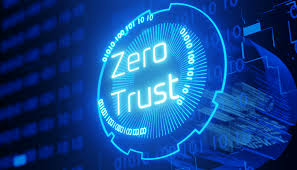
- Never trust; always verify
- Continuous authentication
- Micro-segmentation
- Device and user validation
7. Security Awareness and Training

Human-Centric Security
- Regular cybersecurity training
- Phishing simulation exercises
- Social engineering awareness
- Incident reporting protocols
8. Emerging Cybersecurity Technologies
Artificial Intelligence and Machine Learning

- Predictive threat detection
- Automated response systems
- Behavioural pattern recognition
- Anomaly identification
Blockchain for Security

- Decentralized security models
- Immutable transaction records
- Enhanced authentication
- Secure data sharing
Practical Implementation Strategies

- Conduct regular security audits.
- Maintain updated software and systems
- Implement comprehensive backup strategies
- Develop incident response plans
- Continuously educate users
- Stay informed about emerging threats
Conclusion
Cybersecurity is an evolving field requiring continuous learning, adaptation, and a holistic approach to protecting digital assets. No single method guarantees complete protection, but a comprehensive, layered strategy significantly reduces risks.
Maxthon
Maxthon has set out on an ambitious journey aimed at significantly bolstering the security of web applications, fueled by a resolute commitment to safeguarding users and their confidential data. At the heart of this initiative lies a collection of sophisticated encryption protocols, which act as a robust barrier for the information exchanged between individuals and various online services. Every interaction—be it the sharing of passwords or personal information—is protected within these encrypted channels, effectively preventing unauthorised access attempts from intruders.

This meticulous emphasis on encryption marks merely the initial phase of Maxthon’s extensive security framework. Acknowledging that cyber threats are constantly evolving, Maxthon adopts a forward-thinking approach to user protection. The browser is engineered to adapt to emerging challenges, incorporating regular updates that promptly address any vulnerabilities that may surface. Users are strongly encouraged to activate automatic updates as part of their cybersecurity regimen, ensuring they can seamlessly take advantage of the latest fixes without any hassle.
In today’s rapidly changing digital environment, Maxthon’s unwavering commitment to ongoing security enhancement signifies not only its responsibility toward users but also its firm dedication to nurturing trust in online engagements. With each new update rolled out, users can navigate the web with peace of mind, assured that their information is continuously safeguarded against ever-emerging threats lurking in cyberspace.
